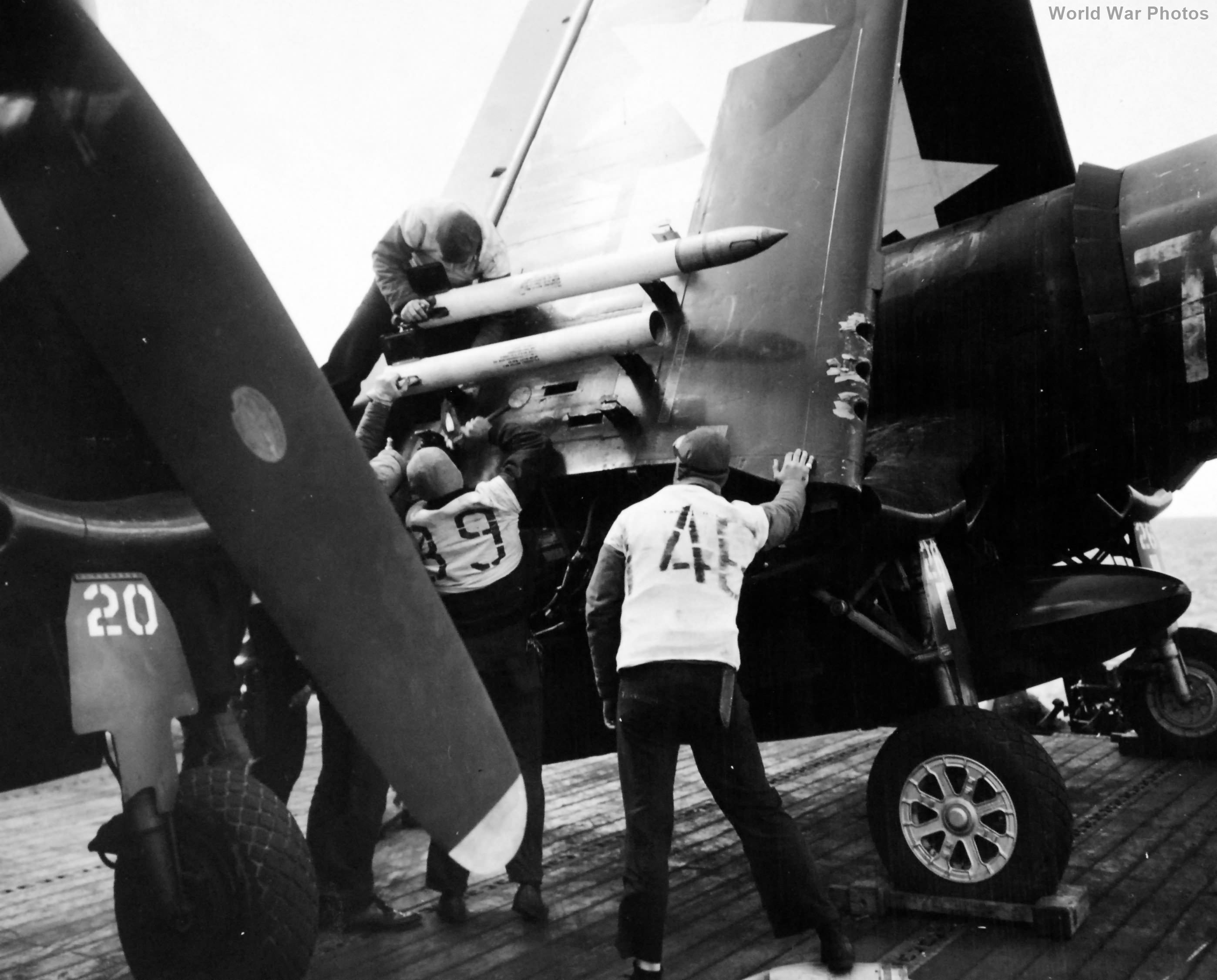As World War II progressed, the effectiveness of fighters in close ground support missions was enhanced through the use of air-to-surface rockets. Initially, fighters relied on heavy machine guns and wing cannons for strafing runs, but it was discovered that rockets could deliver a more devastating impact, especially against fortified ground targets.
Introduction of the 3.5-Inch Air Rocket (AR)
The first rockets used in these missions were 3.5-inch air rockets, which were originally designed by the British for attacking German U-boats. These rockets, equipped with solid warheads, proved to be surprisingly effective in their anti-submarine role. Unlike depth charges, which needed precise placement, the rockets allowed pilots to strike directly at U-boats, providing a new level of precision. Recognizing the potential of air rockets, the U.S. Navy adapted the 3.5-inch model by combining its rocket motor with a 5-inch naval shell, creating a more versatile weapon suitable for a wider range of targets, particularly surface threats. However, this combination resulted in reduced range and velocity compared to the earlier model.
High Velocity Air Rocket (HVAR)
To address the limitations of earlier rockets, the High Velocity Air Rocket (HVAR) was developed. This 5-inch rocket became one of the most successful air-to-surface weapons of the war. With enhanced speed and power, the HVAR-5 could be launched from a variety of aircraft, including the F6F Hellcat, F4U Corsair, and TBF/TBM Avenger.
One of the drawbacks of the earlier 3.5-inch rockets was the use of rail-launch systems, which caused significant drag on the aircraft. This restricted their use mostly to larger planes like the TBF Avenger, which could tolerate the aerodynamic drag. With the introduction of the HVAR-5, a new hardpoint system was designed, which minimized drag and allowed the rockets to be fitted on high-performance fighter aircraft like the Hellcat and Corsair.
Impact in the Battle for Okinawa
During the Battle of Okinawa, U.S. Navy and Marine Corps aircraft equipped with HVAR-5 rockets played a crucial role in ground support operations. Rocket-armed fighter-bombers launched precise air strikes within 100 yards of American front lines, significantly enhancing the effectiveness of ground attacks against Japanese fortifications.
The “Tiny Tim” Rocket
While the HVAR-5 was highly successful, it struggled against heavily armored naval vessels. To counter this, the U.S. Navy developed a larger, 11.75-inch rocket called the “Tiny Tim”. However, this massive weapon proved to be problematic. Due to its size, it couldn’t be mounted on conventional hardpoints and required free-fall before its engine could ignite, resulting in poor accuracy. Consequently, the “Tiny Tim” was deemed a failure in combat operations.
The use of air-to-surface rockets revolutionized close air support during World War II. Starting with the 3.5-inch rockets, which provided early success against U-boats, the development of the HVAR-5 gave the Navy and Marine Corps a powerful tool for ground attack missions. Although some rocket designs, like the “Tiny Tim,” were less successful, the integration of rockets into the U.S. arsenal marked a significant advance in the use of aerial firepower in warfare.
